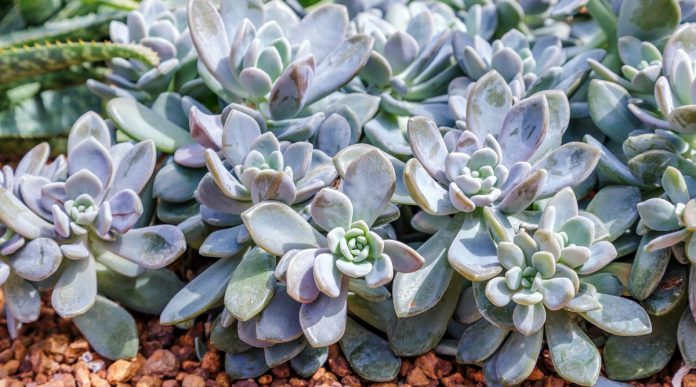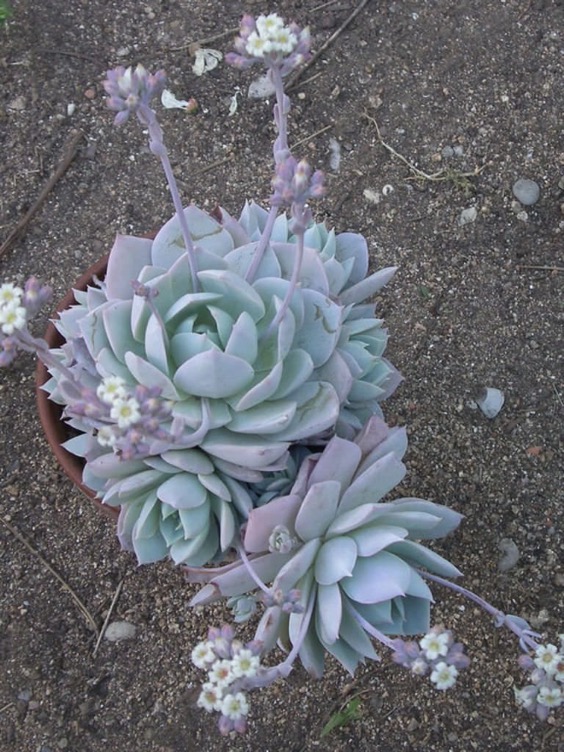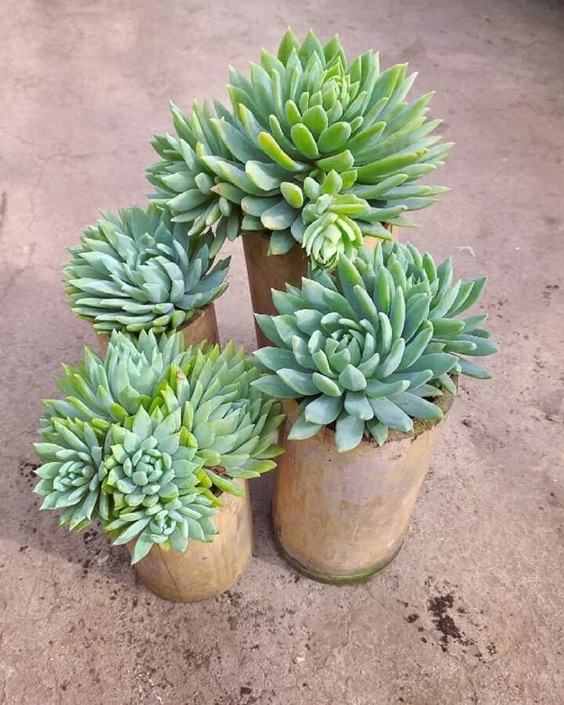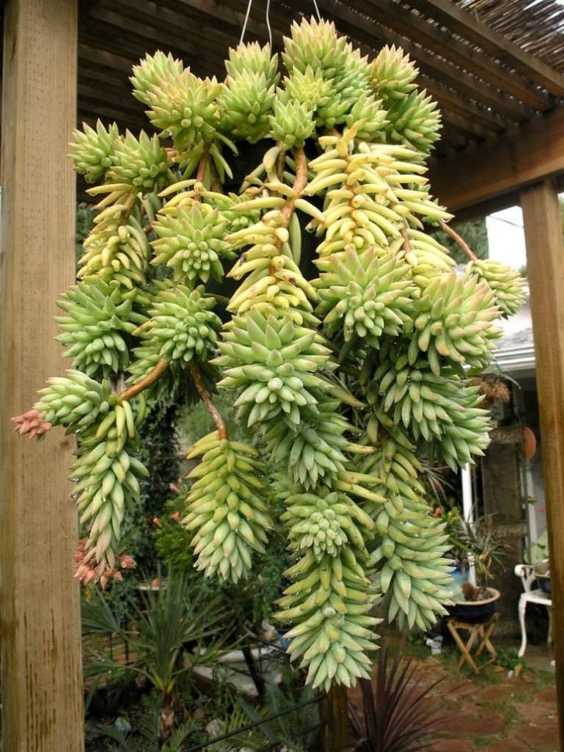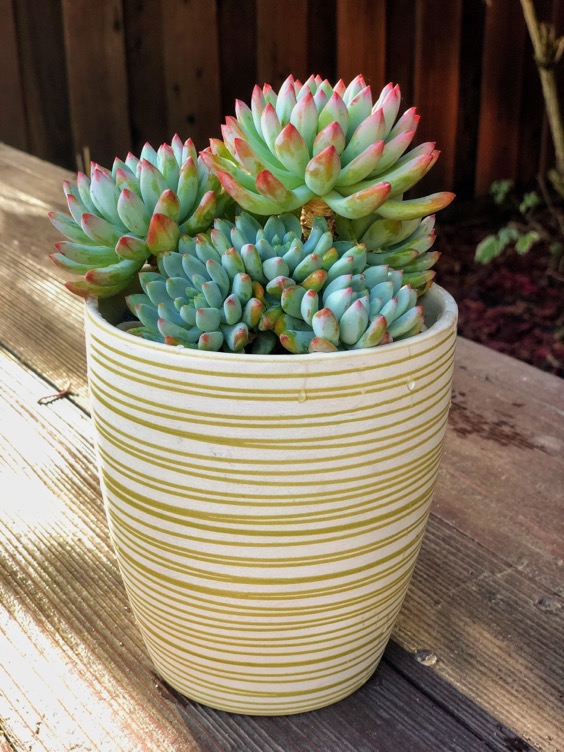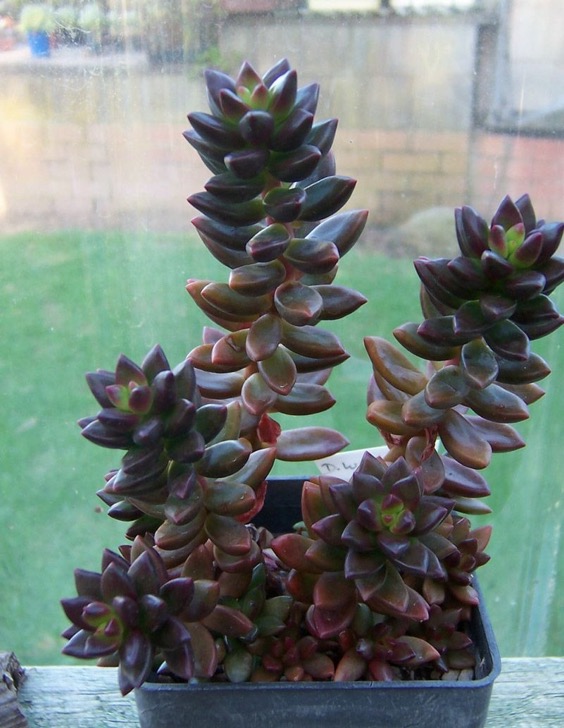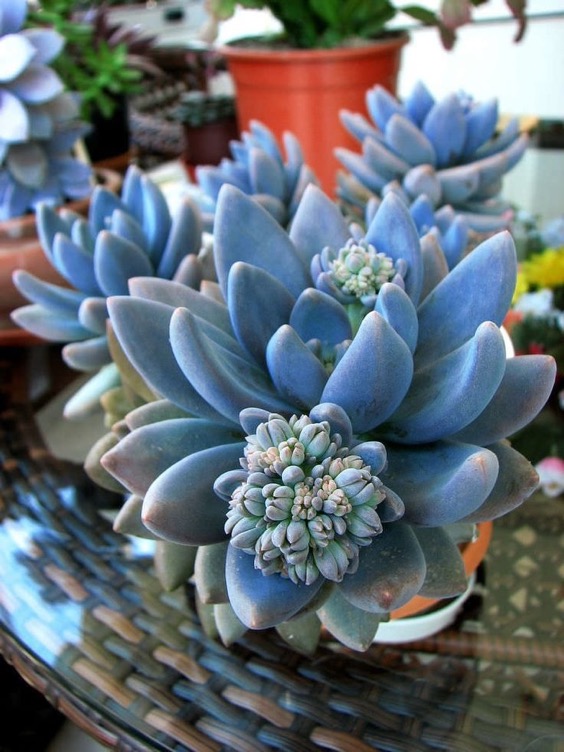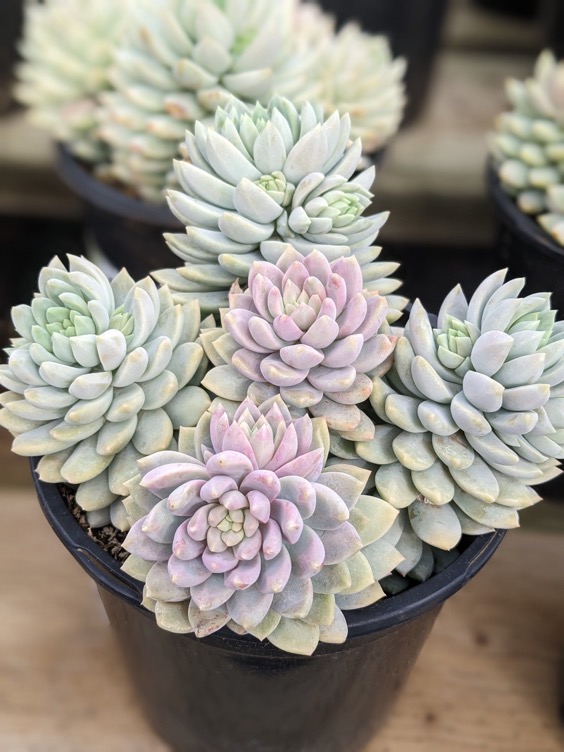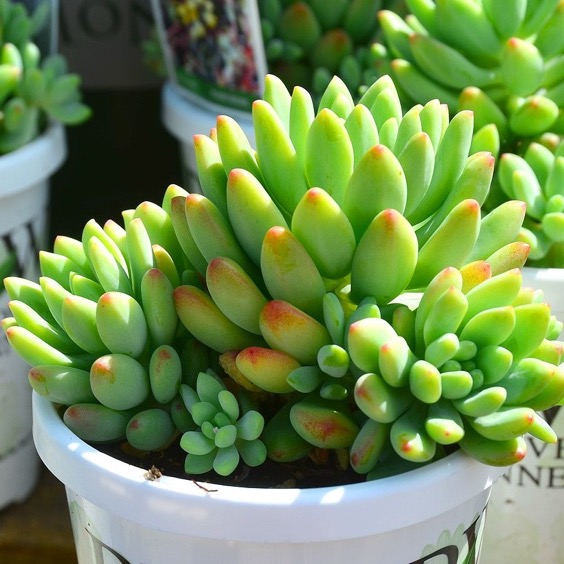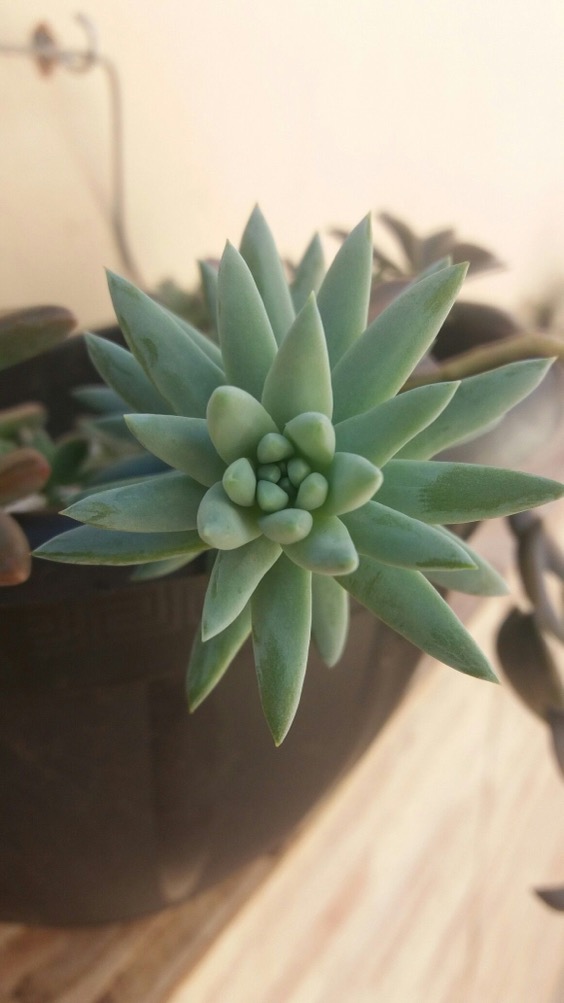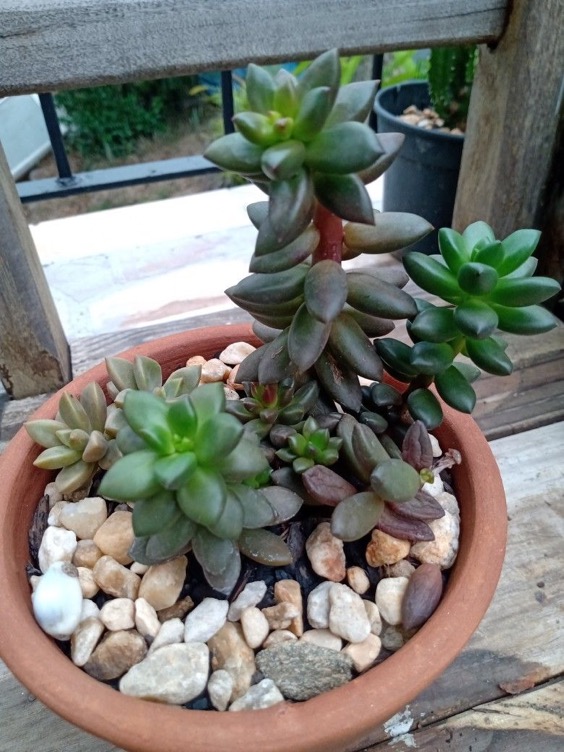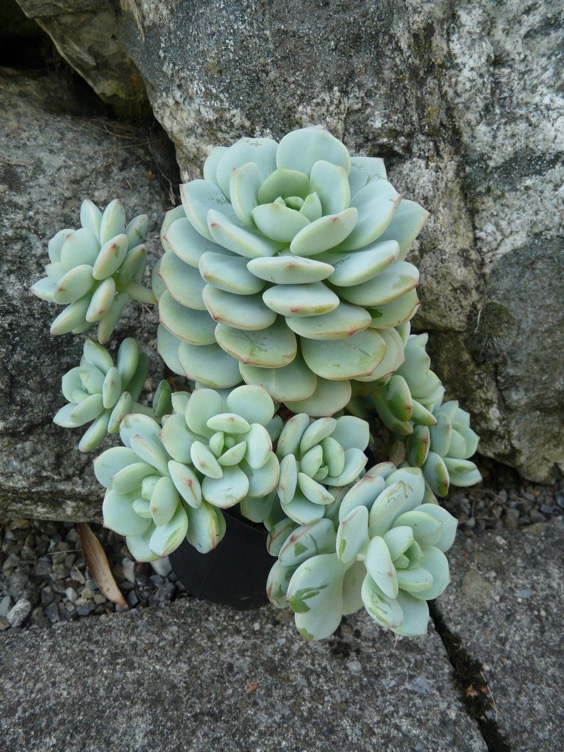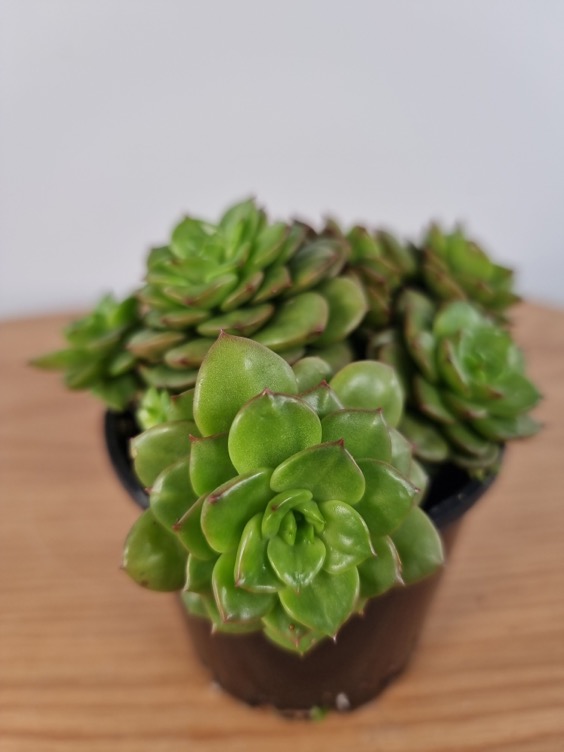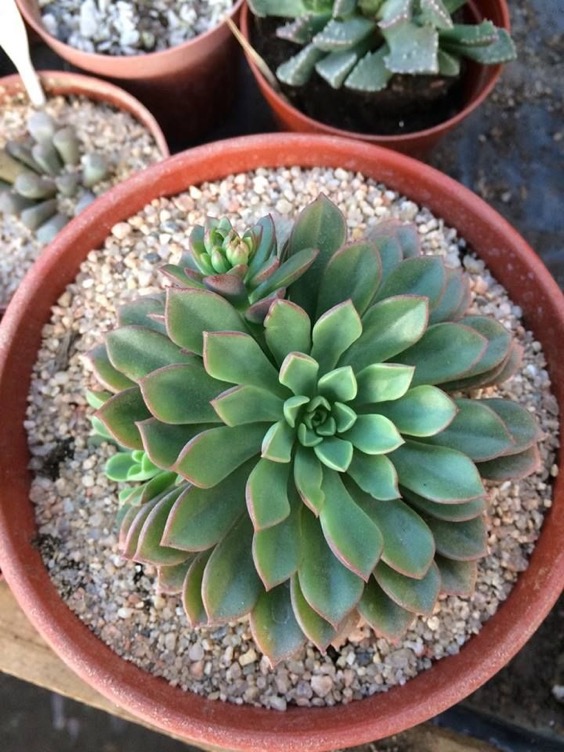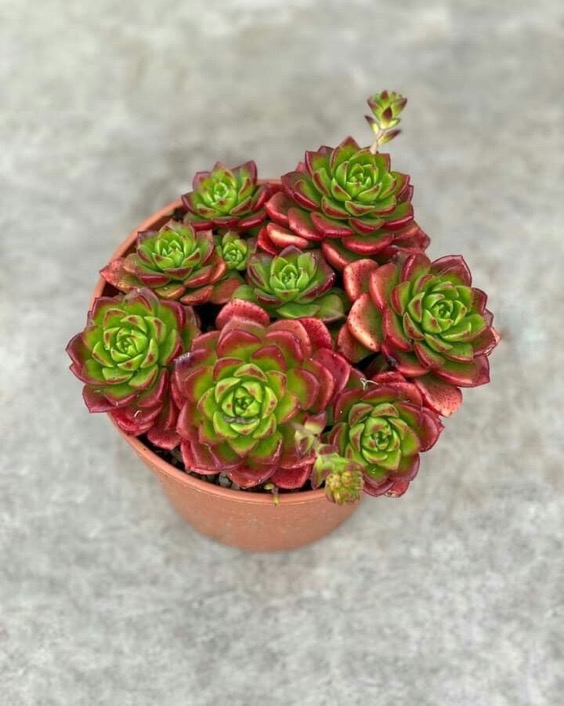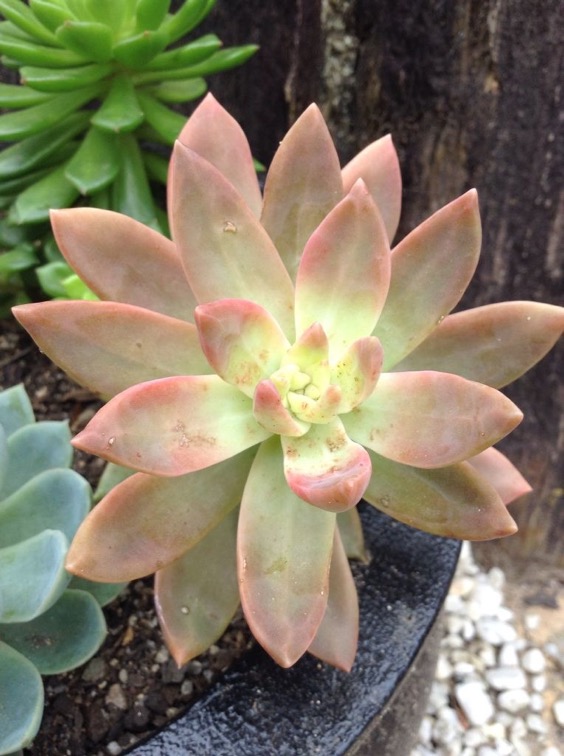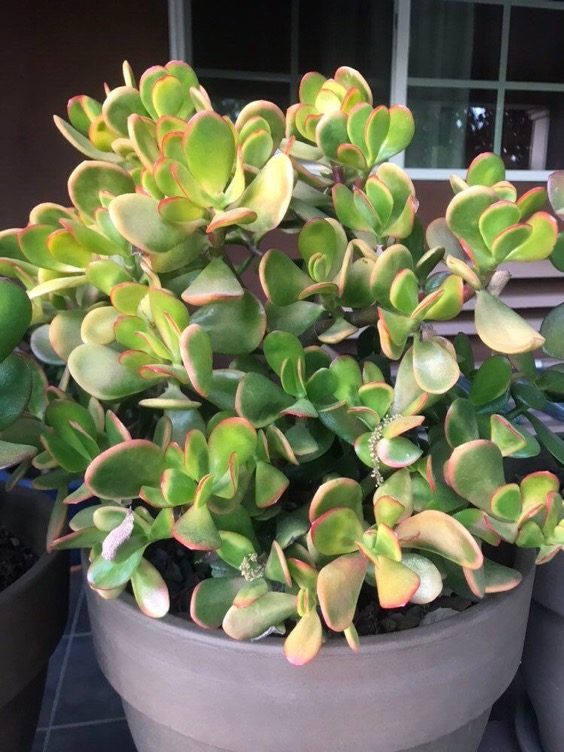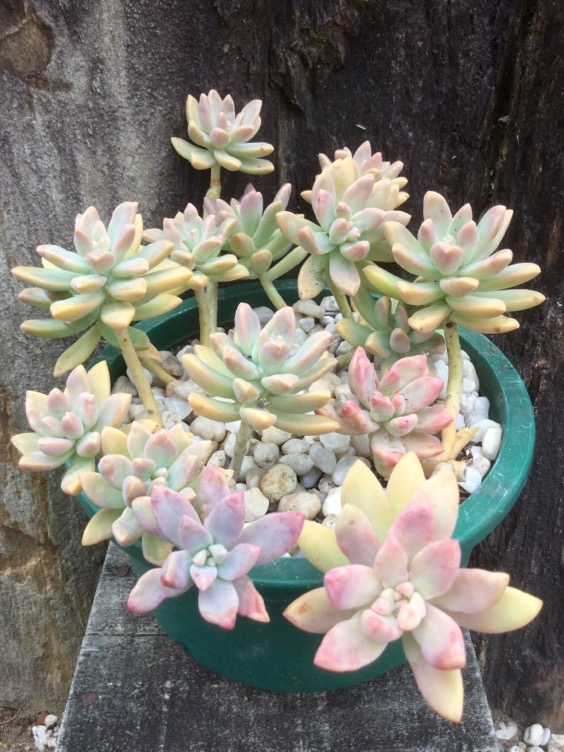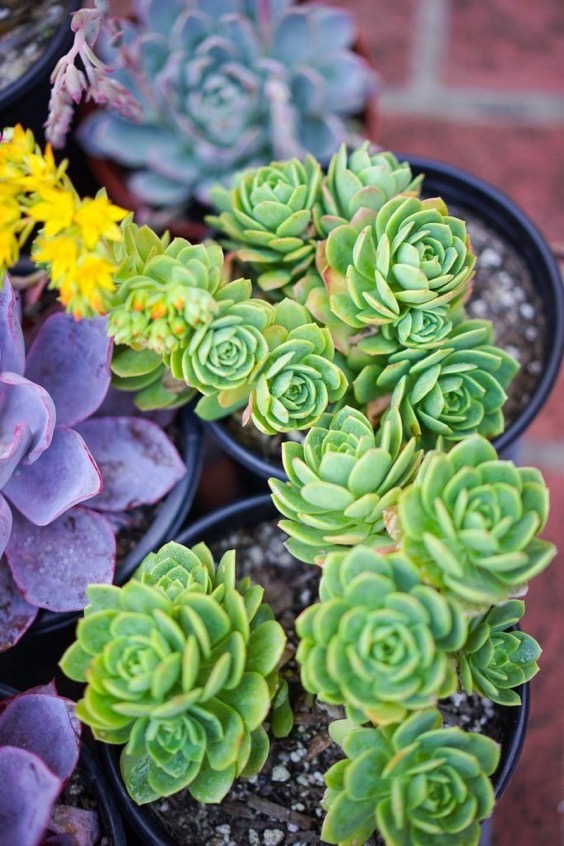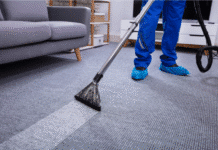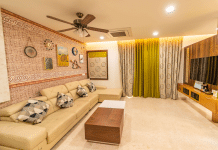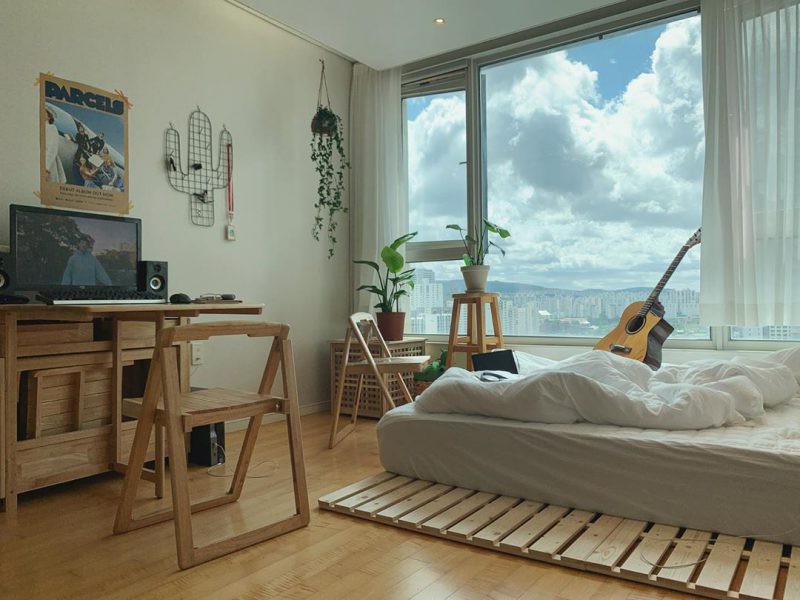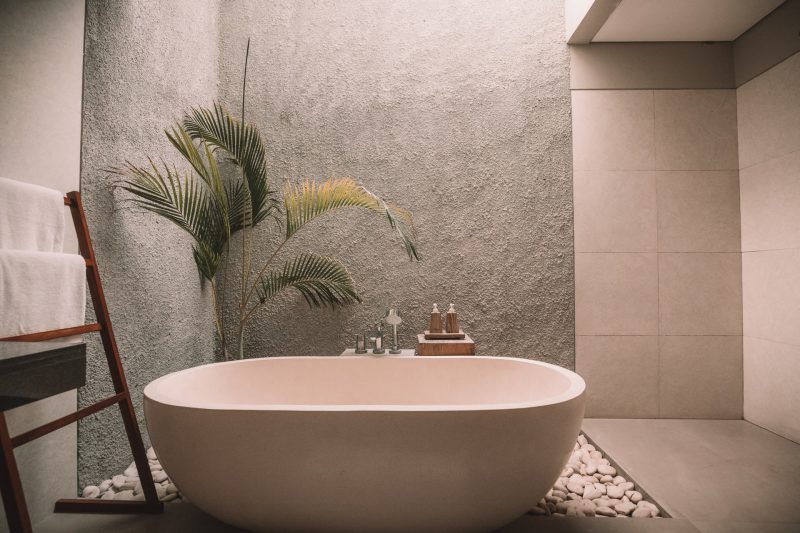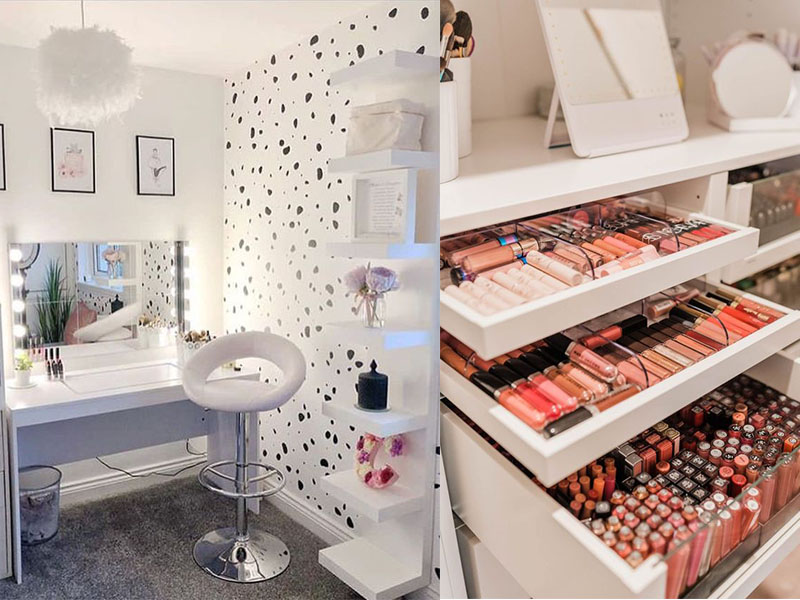olidhomes.com – Sedeveria is a succulent hybrid of a plant cross between Sedum and Echeveria. Sedeveria is also known as Sedum. This plant resembles the Sempervivum plant but has thicker leaves. The colorful leaves are a distinct character that makes it look so attractive. You can find red, yellow, gray, and combinations of several colors. Therefore, this one plant is very suitable to be used as decoration to add beauty and aesthetic value to the room. And, here are 18 Sedeveria Variety, A Hybrid Succulent with Beautiful Colors. So, let’s check it out!
1. Sedeveria ‘Blue Lotus’
Sedeveria ‘Blue Lotus’ is a popular type. It has bluish-green leaves. This plant has a flower-like appearance. They almost form a stemless rosette plant. Sedeveria ‘Blue Lotus’ is stunning to grow in a pot as an indoor plant.
Moreover, Sedeveria ‘Blue Lotus’ is easy to grow in almost any soil. It requires well-draining soil and moist temperature. Even though this is succulent, Sedeveria ‘Blue Lotus’ needs more water during hot days. Also, it tolerates partial shade. You can grow them in a pot, then put them in a shady place.
1 of 18
2. Sedeveria ‘Fanfare’
Sedeveria ‘Fanfare’ is a rosette succulent. It looks like Sedeveria Blue Lotus, but it has a more powdery color. Their blue-green leaves will cover the pointed leaves. Every leaf has a matte finish. It makes them look more interesting.
Besides, this colorful succulent can bloom star-shaped flowers. They will produce tall stalks with yellow flowers. Sedeveria ‘Fanfare’ will grow sprawl, but they will be compact after regular pruning. Moreover, this plant requires enough water. They will die slowly if it is underwatered or overwatered.
2 of 18
3. Sedeveria ‘Harry Butterfield’
Sedeveria ‘Harry Butterfield’ is a simple plant. It is also known as Super Donkey Tail or Giant Burro’s Tail. This succulent is interesting to grow as a hanging plant. Their long green stems will create a natural accent on the air.
Sedeveria ‘Harry Butterfield’ is a hybrid plants from Sedum morganianum and Echeveria derenbergii. It has many trails and pointed leaves with minty green colors. This succulent is easy to grow from propagation or stem cutting. Like other succulents, they will grow naturally in dry soil but prefers enough water during first growing.
3 of 18
4. Sedeveria ‘Blue Elf’
Sedeveria ‘Blue Elf’ or the ‘Happy Plant’ is another bluish variety. It has rosette leaves with blue-green colors. Like other Sedeveria, it has thick and fleshy leaves. They use fleshy leaves to survive in drought conditions. It loves full sun to partial shade.
Moreover, Sedeveria ‘Blue Elf’will grow brighter in a sunny place. They will bloom bright yellow flowers that emerge multiple times per year. Even though it is a sun lover, it tolerates cold temperatures. It requires enough water during the hot season.
4 of 18
5. Sedeveria ‘Jet Beads’
Sedeveria ‘Jet Beads’ is a hybrid between Sedum stahlii and Echeveria affinis. This hybrid succulent is small. It has dark copper, green, and burgundy. They will create a striking accent in your garden. Use a pot or container for the best place to grow them.
This succulent has semi-upright stems. Their stems look like a string of beads. Sedeveria ‘Jet Beads’ need enough sunlight to maintain their lovely leaves. This succulent will produce yellow flowers in the summer season. They will turn darker in cooler weather. Do not worry, the frost will not damage this plant
5 of 18
6. Sedeveria ‘Blue Mist’
Sedeveria ‘Blue Mist’ is a striking succulent. This is a hybrid succulent between Sedum craigii and Echeveria affinis. It has short stems. This plant offers beautiful rosette leaves in bluish-purple colors. Exposure to sunlight will affect their leaves. It will turn into a deeper purple under intense sunlight.
Sedeveria ‘Blue Mist’ can spread up to 8 cm in diameter. It requires adequate water when the topsoil is fully dry. Besides, this succulent can bloom orange-pink flowers. They will stand upright about 15 cm tall in the summer season. The flowers resemble Sedum craigii.
6 of 18
7. Sedeveria ‘Lilac Mist’
Sedeveria ‘Lilac Mist’ will complete your succulent garden. It is a hybrid between unknown Sedum and Echeveria. This succulent has great coloration. Sedeveria ‘Lilac Mist’ has lilac color and silvery blue appearance. Thus, it can add a new grey accent to your garden.
Besides, Sedeveria ‘Lilac Mist’ needs direct sunlight to bring out deeper orange colors. They grow branching stems up to 10 cm. Every branch has sturdy leaves. In addition, you can grow more plants by propagation. This succulent will add a new accent to your houseplant.
7 of 19
8. Sedeveria ‘Hummelii’
Sedeveria ‘Hummelii’ is a striking succulent. Thie plant is a hybrid of Sedum pachyphyllum and Echeveria derenbergii. It has yellow-green leaves. Like other succulents, it can grow in almost all types of soil. The sandy soil will create great soil for them.
This succulent can grow up to 10 cm tall. Their rosette leaves will grow darker when growing mature. It loves enough sunlight to maintain its leaves. Also, Sedeveria ‘Hummelii’ will bloom in the summer season. The star-shaped flowers are stunning to decorate the garden.
8 of 18
9. Sedeveria ‘Blue Burrito’
Sedeveria ‘Blue Burrito’ is a bluish succulent. Their blue rosette leaves have a pink flush on their tips. It turns pinkish blue when growing mature, but it needs constant sunlight. Also, it requires enough water to withstand the dry season. Besides, this succulent will add a colorful design.
This succulent is a hybrid of Sedum morganianum ‘Burrito’ and Echeveria peacock. It resembles the rosette leaves with blue shades. If you see it carefully, you will see the soft pink shade on their tips. Their stems can grow taller with full of tiny leaves. You will love to plant this succulent with minimum maintenance.
9 of 18
10. Sedeveria ‘Sorrento’
Sedeveria ‘Sorrento’ is a beautiful hybrid plant between an unknown Sedum and an unknown Echeveria. It grows rosette leaves with bronze to coral shades. This succulent has a bright green center. Also, it offers vibrant colors for your garden. This succulent is interesting to grow in a pot.
Besides, it is an easy-growing plant. It will not declutter your garden when they invade the soil. Like most succulents, it loves full sun to partial shade. Adequate sunlight will help them to maintain light veins on their leaves. If they grow well, you will see yellow flowers in the summer season.
10 of 18
11. Sedeveria ‘Pudgy’
Sedeveria ‘Pudgy’ is a hybrid between Sedum clavatum and Echeveria derenbergii. This plant resembles the Sedum clavatum appearance reminiscent of Echeveria derenbergii. Look at this plant. It has many small branches with fleshy leaves. The tip of a leaf will bloom flowers. This succulent offers yellow, orange, or delicate white flowers in the spring season.
This plant is drought tolerant. This succulent needs enough water, so you can pour water every week. Ensure that the topsoil is fully dry before watering. Also, it requires full sun to grow healthy leaves. A good environment will help them to grow well.
11 of 18
12. Sedeveria ‘Rolly’
Sedeveria ‘Rolly’ is an aesthetic succulent. It is a small succulent with compact stems. Their short fleshy leaves are stunning and create a rosette appearance. The leaves are waxy bright green in the summer season. It loves sunlight to maintain its beautiful leaves.
It is a hybrid plant between Echeveria agavoides and Sedum cuspidatum. Moreover, Sedeveria ‘Rolly’ is easy to care for. This plant is a flowery succulent. They will bloom pinkish-yellow flowers in the summer season. Sedeveria ‘Rolly’ can grow in the hot season and cold temperatures in the winter season.
12 of 18
13. Sedeveria ‘Darley Dale’
Sedeveria ‘Darley Dale’ is a big rosette succulent. Their leaves are light green to reddish green. It looks catchy to grow in a pot. They will invade the soil, then grow new plants. Besides, this plant is a nice choice to complete your garden. You will love this plant because they will not take nutrients from other plants while growing together.
Sedeveria ‘Darley Dale’ is a sun lover. It prefers full sun to partial sun. Even though it tolerates a normal cold temperature, do not let them stand in water. The excessive rain splash can damage their roots. Thus, cover the topsoil with mulch or rock to reduce the soggy soil.
13 of 18
14. Sedeveria ‘Letizia’
Sedeveria ‘Letizia’ is an interesting hybrid between Sedum cuspidatum and Echeveria setosa var ciliata. It grows small rosette leaves. Their rosette leaves can reach 6 cm across in sunny places. Besides, the long and textured stems grow slowly, like Sedum cuspidatum. Like other Sedeveria varieties, Sedeveria ‘Letizia’ will grow darker based on the situation.
This succulent will turn into bright red-purple color on the tips. The colder temperature can affect their leaves to get darker. Otherwise, the bright sunlight will support them in growing bright leaves. Besides, this succulent is not a heavy feeder. Thus, you do not need to fertilize this plant.
14 of 18
15. Sedeveria ‘Pat’s Pink’
Sedeveria ‘Pat’s Pink’ is also known as Graptosedum ‘Paddy Peate’. This is a small succulent that grows like a shrub. It has fleshy rosette leaves. Sedeveria ‘Pat’s Pink’ has a highly variable color. Thus, you can choose the most attractive color to grow in your garden.
Sedeveria ‘Pat’s Pink’ is easy to care for. It requires bright sunlight to grow more leaves. They can grow up to 10 cm tall and 20 cm wide. Moreover, Sedeveria ‘Pat’s Pink’ can tolerate a little frosty hardy at about 0°C. The colder temperature will kill them slowly.
15 of 18
16. Sedeveria ‘Spring Jade’
Sedeveria ‘Spring Jade’ is an icy blue succulent. It offers green leaves with red tips. Sedeveria ‘Spring Jade’ grow curve upwards. Also, it has fine hairy leaves. This succulent is quite attractive to grow as a houseplant. You can plant them in a pot, then put them on your window sill.
Besides, Sedeveria ‘Spring Jade’ is more interesting when during blooming time. Their yellow flowers are striking. You can plant them with another rosette succulent like Sempervivum. Like other succulents, Sedeveria ‘Spring Jade’ loves full sun to partial shade. Also, it prefers well-draining and moist soil.
16 of 19
17. Sedeveria ‘Starburst’
Sedeveria ‘Starburst’ is a pale rosette succulent. It has pale grey or green leaves. Their leaves will turn darker in a cooler season. Meanwhile, they will grow brighter in warm seasons. You can add this plant to your succulent garden. It will create a calming accent between other plants.
Furthermore, Sedeveria ‘Starburst’ will grow in almost any soil. It prefers succulent soil with well-draining materials. Also, this plant requires water to maintain its fleshy leaves. You can water them when the topsoil is fully dry. Besides, exposure to sunlight will affect their growth. This succulent does not need much fertilizer, but it is fine to give some soil nutrients.
17 of 18
18. Sedeveria ‘Green Rose’
Sedeveria ‘Green Rose’ is a hybrid plant between Sedum palmeri and Echeveria derenbergii. It has symmetrical green leaves. Like most Sedeveria plants, the leaves can be darker in cooler temperatures. The green leaves will turn pinkish green in the winter season. They may tolerate the cold weather but prefers full sun to partial sunlight.
Besides, it is a low-maintenance plant. Sedeveria ‘Green Rose’ can survive in drought conditions. It will bloom yellow flowers in the summer season. The ideal soil to grow them is succulent soil. Ensure that it gets well-draining soil, so its roots will not rot.
18 of 18
Final Words
Sedeveria is an attractive succulent. It is a smaller rosette plant than Sempervivum. And also, this plant has leaves with thick dating. Their rosette leaves are colorful which makes them look so attractive. These colors can change color in colder temperatures. Not only that, Sedeveria is a succulent with a low water demand. This is a great choice if you want to grow it in your garden.

